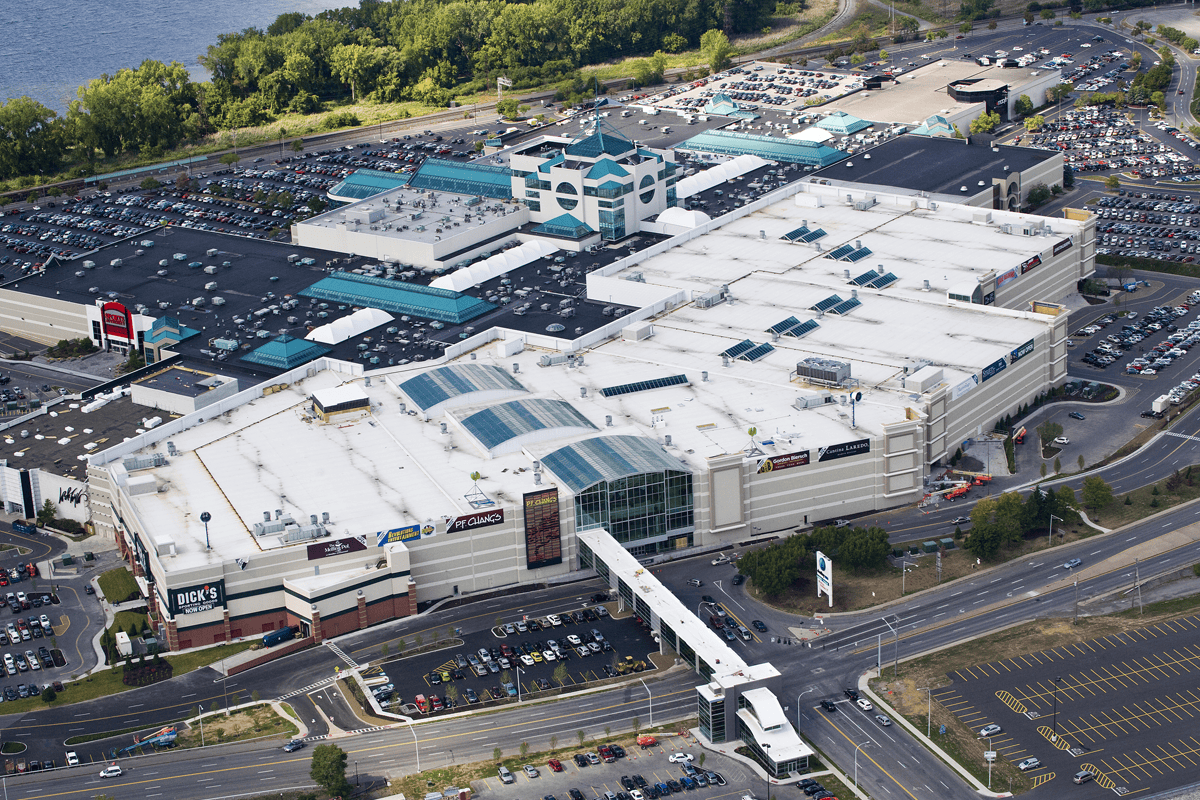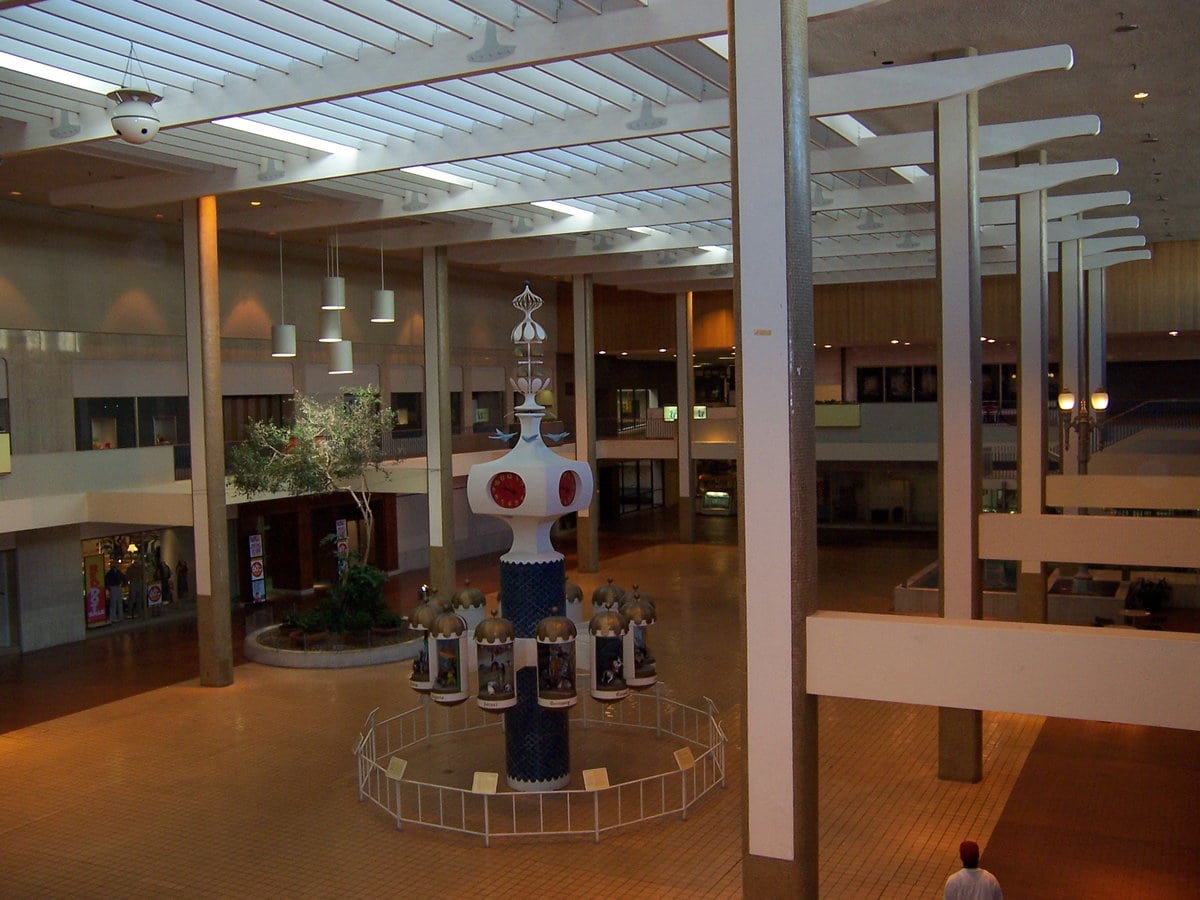When Malls Still Mattered
There was a time when ShoppingTown Mall was where you bought shoes, caught a movie, picked up cough drops, and bumped into someone from high school, all before dinner.
Built in DeWitt, an eastern suburb of Syracuse, NY, it opened in March 1954 as an open-air retail strip and quickly became a reliable fixture in the regional economy.
People came for JCPenney, Addis, Woolworth, Walgreens, and even Acme Markets. They stayed because it kept changing just enough to stay useful. ShoppingTown Mall wasn’t flashy. It didn’t need to be. It was a mall that worked.
Before the last lights shut off and the developers moved in, it carried decades of small transitions and big market shifts.
In a search for things to do in Syracuse, New York, it once came up near the top. That was no accident.
Ground Lease and Grand Openings
By August 1953, Eagan Real Estate Inc. had announced a plan for a new retail center in DeWitt.
The concept was open-air, anchored by tenants who already knew how to pull steady foot traffic.
F. W. Woolworth, JCPenney, Grand Union, Walgreens, and Kinney Shoes had committed early.
Addis, the local department store with Syracuse roots, joined the roster by February 1954.
Four days of grand opening events started on March 3, with Addis itself opening later that fall on October 8.
The build-out kept going. Kallet Theater, Flah & Co., and W. T. Grant were added during 1955 and 1956.
By the end of that period, ShoppingTown Mall had already moved past the typical strip-center layout.
It was becoming a hub, one with the kind of tenant mix that developers like Eagan knew would bring consistent lease value.
The location had been chosen with access in mind. It was well-positioned for the car-heavy habits of postwar suburban households.
And the real estate footprint left room for future additions, which would come quickly.
In 1960, the mall announced a new Dey’s store, one focused entirely on home goods.
It opened its doors in August 1962. The full Dey’s store followed on October 11, 1966.
Weatherproofing the Revenue Stream
In late 1973, mall operators took a gamble that paid off in square footage.
They started sealing up the open-air walkways, converting ShoppingTown Mall into an enclosed retail complex.
The timing was uneasy. Edwards, one of the planned anchors, closed under bankruptcy by November.
Even so, crews kept working. They pushed ahead through structural redesigns, ventilation installs, and fit-outs for incoming tenants.
But just seven months later, in June 1974, a fire broke out that would mark one of the mall’s worst setbacks.
It caused $500,000 in damage and took the life of a firefighter.
W. T. Grant sustained the heaviest losses.
By the following year, the vacancy left by Edwards was handed off to JCPenney, which opened its new anchor store in January 1975.
Addis and Flah & Co. followed with upgraded stores reportedly twice the size of their earlier locations.
The new enclosed mall officially opened on August 4, 1975, accompanied by a week of grand opening events.
A two-screen cinema, formerly a Kallet, had already shifted to Cinema National under Carrols Development Corp.
The transformation was steady, if uneven.
By the end of 1975, ShoppingTown Mall had completed its shift into an enclosed property, with larger anchors and a consolidated layout built for retail longevity.

Expansion, Consolidation, and Retail Turnover
Woolworth re-entered the mix in August 1978, claiming the old W. T. Grant space.
For nearly a decade, the mall held steady.
Then came October 1984, when Chappell’s opened a 57,000-square-foot anchor, adding heft to the retail lineup.
Five years later, in May 1989, Addis merged with Dey Brothers, setting up plans to shutter the Addis location and fold operations into Dey’s existing store.
By that summer, Wilmorite Properties had secured control through a partnership with Eagan and moved quickly to announce a full remodel.
That renovation ran deep. By 1991, the mall had a new wing, a relocated Addis & Dey, and a food court.
The project cost $53 million.
After Addis & Dey shut down in 1992 during bankruptcy, Kaufmann’s jumped in, announcing plans in early 1993 to relocate from Fayetteville Mall.
That same year, Woolworth closed again. Steinbach’s followed in 1994 after losing money at the location, and TJ Maxx left for Fayetteville.
Sears took over both floors of the vacated Addis & Dey space and added an auto center.
Media Play launched in 1994, absorbing the Woolworth and Kallet Theater spaces.
Chappell’s, acquired by The Bon-Ton, completed its transition that same year.
Portfolio Flip and Unrealized Plans
In late 2004, Wilmorite sold ShoppingTown Mall to Macerich as part of a $2.3 billion multi-property deal.
The new owner didn’t waste time floating ideas.
By March 2007, Macerich pitched an open-air plaza with storefronts facing Erie Boulevard East, a direct attempt to modernize a format that had already started losing traction in national leasing trends.
But that plan never went forward. It hit the same wall that paused dozens of mid-2000s retail expansions: the looming recession.
No permits, no groundbreaking, no renderings beyond internal memos.
By then, ShoppingTown Mall had already picked up new names like Old Navy, which opened in January 2000, and Dick’s Sporting Goods, announced two months later.
Kaufmann’s rebranded as Macy’s in September 2006, part of a larger corporate consolidation by Federated Department Stores.
Despite those adjustments, the mall’s long-term tenancy pattern was starting to erode. Foot traffic shifted elsewhere.
Destiny USA, with its newer infrastructure and bigger regional draw, became the default location for many of the same brands.
Macerich’s local reinvestment efforts stalled.
There was no expansion, no plaza, and no response that fit the broader market trend toward mixed-use formats.
The ownership quietly sat on the asset, waiting for either a retail comeback or a buyer with a different redevelopment timeline.

Tenant Flight and Management Breakdown
Macy’s announced its closure in March 2015, pointing directly to stronger performance at Destiny USA.
That exit set off a sequence. Dick’s Sporting Goods left in October that same year, relocating to DeWitt Commons.
JCPenney pulled out by April 2016.
By the time Sears announced its closure on September 2, 2018, there were no full-line department stores left inside the building.
Other departures followed, such as Rite Aid leaving in June 2019.
The remaining tenants got eviction notices from Moonbeam Capital in September 2020.
That wasn’t a negotiation. It was a wind-down.
The property had been pulled from the Town of DeWitt’s tax rolls as early as March 2020, paving the way for formal demolition and redevelopment.
ShoppingTown Mall, as a functioning retail center, had ceased to exist.
What was to follow was not another round of leasing, but a site clearance for a $400 million mixed-use project rebranded as District East.
Land Use and a Legal Turn
Legal ownership stayed in local hands through the Onondaga County Industrial Development Agency (OCIDA).
Control over design and delivery passed to OHB Redev LLC.
However, the property still had two holdout parcels.
Transformco and Benderson Development owned the footprints of the old Sears and Macy’s locations.
That impasse stalled final plans until November 2024, when the New York State Appellate Division ruled that OCIDA could take control of the remaining parcels under eminent domain.
The legal approval ended a four-year freeze on full-site work.
District East Rises – Ground Prep and Rollout
The court ruling opened the gate for full-phase planning on the District East development.
By early 2025, demolition scheduling and contractor onboarding were already underway.
The site would combine more than 800 residential units with 250,000 square feet of retail and office space.
There are also plans for a multi-screen movie theater, medical offices, and a “premium” grocery store, though the grocer’s name hasn’t been released publicly.
The development is structured in phases, with initial work expected to begin in late 2025 or early 2026.
Street grids will be redrawn. Trails and sidewalks will connect the site to the surrounding neighborhoods.
OCIDA also tied the new layout into the Empire State Trail expansion, aiming to merge recreational access with residential density.
In parallel, DeWitt’s local zoning was amended in late 2024 to permit mixed-use projects on parcels exceeding 25 acres.
That specific change cleared up any regulatory delays that could have slowed down the District East site plan.

🍀







